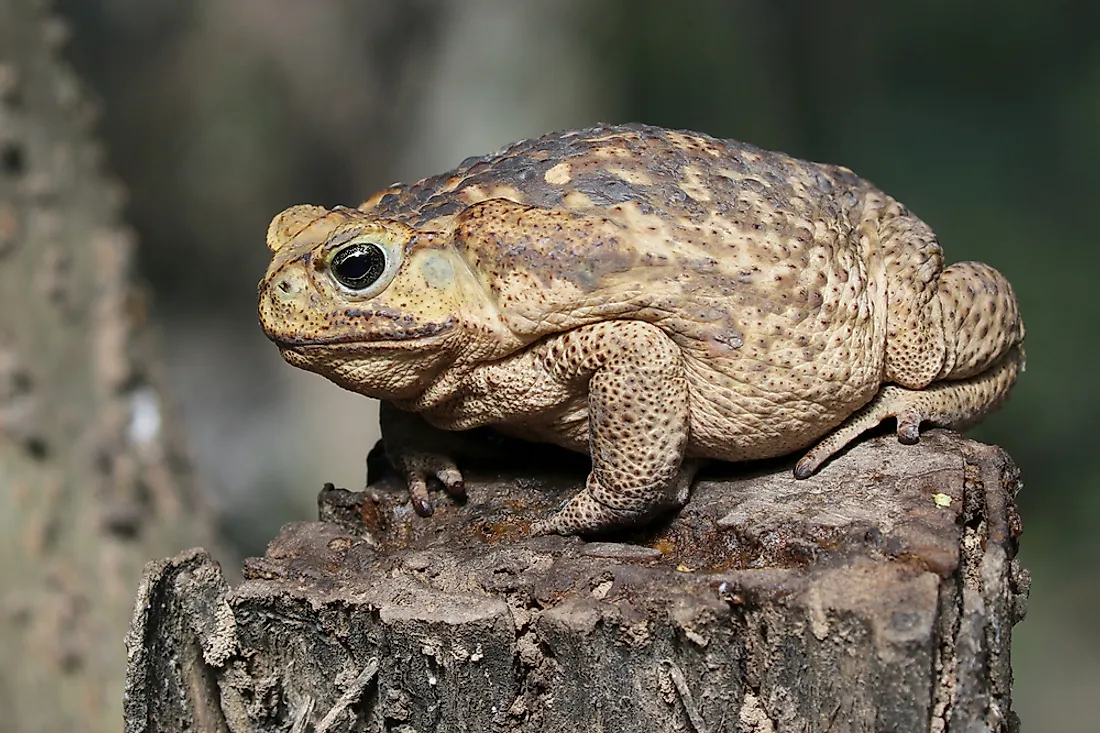What Is The Largest Toad In The World?

Frogs and toads are similar in many ways. However, there are significant differences between the two. A toad is a group of frogs that is characterized by dry, leathery skin and is associated with terrestrial habitat. Frogs spend most of their time in or near water and have moist, slimy skin. Toads have poison-secreting glands both on their backs and warts that secretes irritating substance. There are over 300 species of true toads worldwide. The species vary in sizes with the sizes ranging from 1 to 10 inches. The largest toad in the world is the cane toad, also referred to as the giant toad.
Cane Toad
The cane toad is a terrestrial toad native to Central America and South America. It is the largest toad in the world and belongs to the genus Rhinella. The toad is known for its poisonous gland which secretes a substance that causes irritation to the predator’s body, especially the eyes. The tadpole is also highly toxic and may cause death to animals that ingest them. The cane toad has a voracious appetite and has been introduced in some parts of Pacific and Caribbean islands as pest control method. The name “Cane” is derived from its use in the control of cane beetle. In some of the introduced regions, the toad is now categorized as an invasive species.
Physical Description
The cane toad is the largest toad in the world. The female is longer than the male, attaining a length of 3-5.9 inches. Some toads can reach a length of 9.4 inches. Larger toads inhabit places of low population density. They can live for 10-15 years in their natural habitat. The cane toad has a dry and leathery skin. The skin color varies from gray to yellowish and red-brown. A distinct ridge is set on top of the eyes and runs down to the snout. A parotoid gland is located is located behind each of the eyes. The toads have short legs with toes on each leg which have fleshy webbings on the base. A young cane toad has a dark and smooth skin and lacks the parotoid gland common in adults. The toads are toxic and have paratoid glands at the back of the eyes that secrete bufotoxin when threatened. Some components of the bufotoxin are poisonous to animals and humans. Most of the cane toads identify their prey by movement and detects prey primarily by use of vision. However, they can also locate food using their senses of smell. Their diets comprise of small rodents, birds, reptiles, and other amphibians.
Ecology and Habitat
A mature cane toad is fully terrestrial, only going into the freshwater during breeding. However, tadpoles can survive in salty water. Cane toads inhabit mainly the open grassland and woodland while some have been found in gardens. They are native to South and Central America but have also been introduced in some regions such as Oceania and the Caribbean. Cane toads were introduced in Australia from Hawaii to negate the cane beetle while they were introduced in the Caribbean to counter the pests that were destroying the local crops. In some countries, the cane toad has been classified as an invasive species. Reports suggest that when they move into an area, the biodiversity of the area declines











